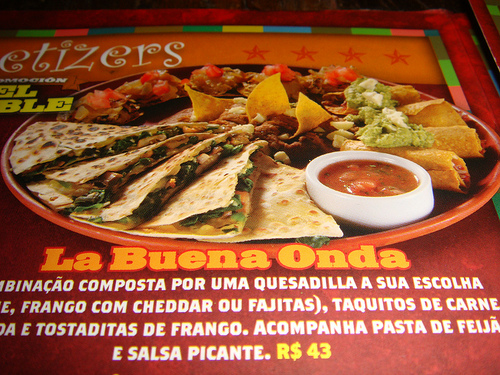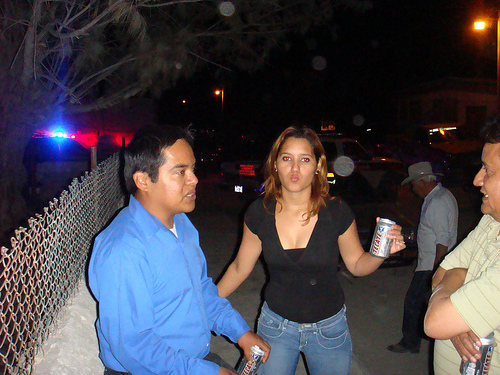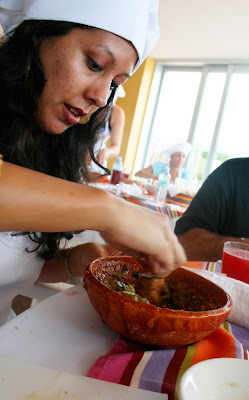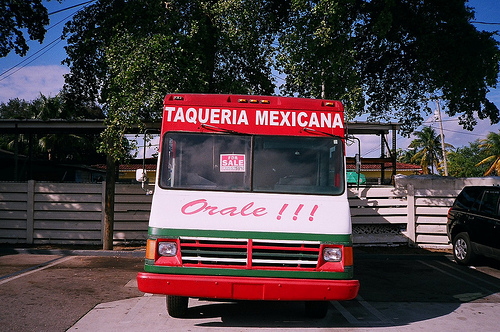While the jury is still out on which Spanish is The Absolute, an overwhelming number of both native and non-native speakers hold the Colombian flavor in high regard. This ambiguous claim might, and often does, spawn a heated debate amongst Spanish speakers for every nationality has reasons to take their Spanish as “standard” Spanish. Nevertheless, if you have set your heart on the Colombian variant, it won’t hurt to learn about some of its most defining features and nuances. The Spanish spoken in Colombia differs from the others in more ways than a few and this article discusses some of the most salient ones of all.
Well, before we start with the salient features of Colombian Spanish, it is important to note that this is not a single, homogenous dialect spoken uniformly throughout the country. Colombian Spanish is, instead, more of a blanket term applied to a diverse collection of disparate dialects spoken in various regions of this nation. At times, and naturally so, it is also a function of demographics in addition to geography.
On a broad level, the Spanish spoken in coastal Colombia carries an interesting resemblance to the Caribbean dialects owing to the close proximity between the regions. On the other hand, the highland speech tends to be more conservative. It is the educated, and generally conservative, speech of the capital city, Bogotá, that essentially enjoys the widespread respect accorded to Colombian Spanish throughout the New World. This is the Spanish you’re most likely to hear on the television and read in the newspapers.
Usted is no alien to the Spanish speaking world but in Colombia, particularly Bogotá, it enjoys more currency than anyplace else. While the rest of the world would limit the usage of this word to only formal settings, Colombians use it all the time. Here, usted is used wherever non Colombians would typically use tú or vos, such as with friends and family. Voseo, which is the hallmark of Latin American Spanish, is practically alien to most parts of Colombia.
Of course, there are exceptions to the rules since Colombian Spanish is not a single dialect but a rather inconsistent continuum of almost unrelated dialects. One such exception is the prevalence of voseo in areas like Valle del Cauca and the Paisa region.
It’s not that Colombians never use tú. It’s just that the usage is very minimal and carries a radically different connotation in Colombian societies. When a man uses tú with a woman, it’s seen as flirtatious. And between two men, it’s taboo! Between two men it’s instantly taken as a sign of homosexuality or, leastwise, effeminate behavior. Just stick to usted all along and you’ll do just fine in all situations in this country. Might seem pretty awkward at first but it’s easy to get accustomed to.
They say the Bogotá accent is the clearest of all and consequently the easiest to understand from a non-native speaker’s standpoint. This meme, along with the fact that this is the Spanish our gorgeous Shakira speaks, should sufficiently incentivize your decision of choosing Colombian Spanish as your target accent!
Though not too many, there still exist some pronunciation features that are more definitive of Colombian speech than any other. One of them is the way they pronounce their j’s as in the word, jardín. While elsewhere it would be rendered with a guttural similar to the one heard at the end of loch in Irish, Colombians prefer the rather simpler sounding “h” of English. So, jardín sounds like “har-deen” in this country and not like “xar-deen” as it does elsewhere. Colombian Spanish shares this feature with some other dialects such as those of Canary Islands, Southern Spain, the Caribbean, Honduras, El Salvador, and Nicaragua.
There’s also a distinct way they pronounce the letters, b, d, and g, in Colombian Spanish. While these letters carry a much softer sound in most cases in other dialects, they are uttered exactly as they are in English by the Colombians. For the linguistic nerds out there, this can be summed up as the “plosive” pronunciation where parts of your mouth enact a sort of explosion. Imagine your lips mildly exploding when you pronounce “b” in English, or your tongue causing a similar explosion with your alveolar ridge when pronouncing “d”. All you need to remember is that he softer sounds for these letters, prominent in Spanish, is more or less absent in Colombian Spanish. The only exception could be the Nariño region where the softer variants do exist.
Diminutives are one of the most defining features of Latin American Spanish and words like ahorita and poquito are commonplace in that part of the world. That these little suffixes (such as the -ito in poquito) mildly or radically alter the meaning of the word in question is well-known. Although the degree and direction of this change in meaning largely depends on the dialect, culture, and context, they abound. And Colombian Spanish is no exception.
What’s salient about Colombian Spanish, though, is the suffix itself. Here, -ito is more commonly replaced by a more ubiquitous -ico in words where the last syllable has a “t” in it. In all other cases, -ito prevails. So, the Mexican gatito becomes gatico in Colombia. Colombians share this practice with the Puerto Ricans, Cubans, Costa Ricans, and the Venezuelans.
Another salient feature of this dialect is that it allows for usage of diminutives not only with nouns and adjectives like elsewhere, but also with verbs! Just as with nouns and adjectives, verbs can also take on these suffixes to intensify the action, particularly in the continuous form represented by the -iendo ending (equivalent of the -ing form in English). Thus, while corriendo is “running,” one can turn it into corriendito to imply “scurrying.”
Even prepositions can take on these suffixes in Colombian speech with a similar intensifying effect. So, while junto a is “next to,” juntico a turns it into “right next to.” Double diminutives are also common as in Mexico giving innovations, like, ahoritica (right at this moment) and buenecitico (perfect or top-shelf). As obvious, two diminutives make it sound more intensive than just one and are, hence, typical of more loaded conversations.
A curious trait of Colombian Spanish is the way family members address each other. No, this is not about usted or tú. This is something even more awkward for a newcomer. What do you think that Latina wife of yours would address you as? Mi amor? Mi esposo? Mi marido? Well, if she is from Colombia, she is most likely to call you – hold your breath – mijo (a colloquial portmanteau for mi hijo or “my son” elsewhere)! Yes, Colombian couples address each other as mijo and mija. Don’t ask why; this is what it is. Just get used to it.
And it doesn’t end here. While your Colombian wife addresses you like a son, think of how she addresses your kids. Well, parents in this country usually call their sons papito (daddy) and daughters, mamita (mommy)! So, who’s the daddy after all? But don’t worry, this kind of awkward usage is not educated Colombian Spanish. You’re more likely to hear them in lower and lower-middle class families.
Another peculiarity of Colombian street-speech is the usage of que in irrelevant contexts. Practically any sentence can be made to start with this word without affecting the meaning. Just another Colombian habit. You are quite likely to hear sentences like these in this country:
Que sale mañana (They’re leaving tomorrow)
Que gracias (Thanks)
This usage is, again, associated with uneducated, lower socio-economic strata of the Colombian society.
There are far more peculiarities in any dialect of any language, let alone Colombian Spanish, to be justifiably covered in a single article. Books have been written discussing these idiosyncrasies and anyone crazy enough about this dialect ought to conduct further research. But no amount of reading and researching can ever rival the value-add of having a native speaker from Colombia as friend. Interacting with them in real is the best way to understand all aspects of their language.
If you have any experience with the Colombians, feel free to share it with the rest of us in your comments. We’d love to learn more about this fascinating dialect through your experiences!
 |
| Colombian Spanish is often seen as the most prestigious of all Photo credit: Juan Carlos Jara Guzmán licensed CC BY 2.0 |
On a broad level, the Spanish spoken in coastal Colombia carries an interesting resemblance to the Caribbean dialects owing to the close proximity between the regions. On the other hand, the highland speech tends to be more conservative. It is the educated, and generally conservative, speech of the capital city, Bogotá, that essentially enjoys the widespread respect accorded to Colombian Spanish throughout the New World. This is the Spanish you’re most likely to hear on the television and read in the newspapers.
Too formal?
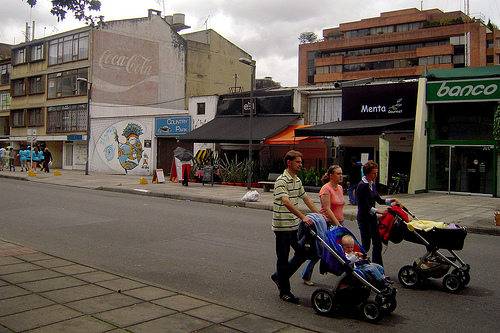 |
| Colombians use usted even with family and friends! Photo credit: Edgar Zuniga Jr. licensed CC BY-ND 2.0 |
Of course, there are exceptions to the rules since Colombian Spanish is not a single dialect but a rather inconsistent continuum of almost unrelated dialects. One such exception is the prevalence of voseo in areas like Valle del Cauca and the Paisa region.
It’s not that Colombians never use tú. It’s just that the usage is very minimal and carries a radically different connotation in Colombian societies. When a man uses tú with a woman, it’s seen as flirtatious. And between two men, it’s taboo! Between two men it’s instantly taken as a sign of homosexuality or, leastwise, effeminate behavior. Just stick to usted all along and you’ll do just fine in all situations in this country. Might seem pretty awkward at first but it’s easy to get accustomed to.
Colombian pronunciation
They say the Bogotá accent is the clearest of all and consequently the easiest to understand from a non-native speaker’s standpoint. This meme, along with the fact that this is the Spanish our gorgeous Shakira speaks, should sufficiently incentivize your decision of choosing Colombian Spanish as your target accent!
Though not too many, there still exist some pronunciation features that are more definitive of Colombian speech than any other. One of them is the way they pronounce their j’s as in the word, jardín. While elsewhere it would be rendered with a guttural similar to the one heard at the end of loch in Irish, Colombians prefer the rather simpler sounding “h” of English. So, jardín sounds like “har-deen” in this country and not like “xar-deen” as it does elsewhere. Colombian Spanish shares this feature with some other dialects such as those of Canary Islands, Southern Spain, the Caribbean, Honduras, El Salvador, and Nicaragua.
There’s also a distinct way they pronounce the letters, b, d, and g, in Colombian Spanish. While these letters carry a much softer sound in most cases in other dialects, they are uttered exactly as they are in English by the Colombians. For the linguistic nerds out there, this can be summed up as the “plosive” pronunciation where parts of your mouth enact a sort of explosion. Imagine your lips mildly exploding when you pronounce “b” in English, or your tongue causing a similar explosion with your alveolar ridge when pronouncing “d”. All you need to remember is that he softer sounds for these letters, prominent in Spanish, is more or less absent in Colombian Spanish. The only exception could be the Nariño region where the softer variants do exist.
Gatito or gatico?
 |
| Gatito o gatico? Photo credit: Fluckr You licensed CC BY-SA 2.0 |
What’s salient about Colombian Spanish, though, is the suffix itself. Here, -ito is more commonly replaced by a more ubiquitous -ico in words where the last syllable has a “t” in it. In all other cases, -ito prevails. So, the Mexican gatito becomes gatico in Colombia. Colombians share this practice with the Puerto Ricans, Cubans, Costa Ricans, and the Venezuelans.
Another salient feature of this dialect is that it allows for usage of diminutives not only with nouns and adjectives like elsewhere, but also with verbs! Just as with nouns and adjectives, verbs can also take on these suffixes to intensify the action, particularly in the continuous form represented by the -iendo ending (equivalent of the -ing form in English). Thus, while corriendo is “running,” one can turn it into corriendito to imply “scurrying.”
Even prepositions can take on these suffixes in Colombian speech with a similar intensifying effect. So, while junto a is “next to,” juntico a turns it into “right next to.” Double diminutives are also common as in Mexico giving innovations, like, ahoritica (right at this moment) and buenecitico (perfect or top-shelf). As obvious, two diminutives make it sound more intensive than just one and are, hence, typical of more loaded conversations.
Who’s the daddy?
 |
| The lower class Colombians speak a very strange Spanish Photo credit: I. D. R. J. licensed CC BY-SA 2.0 |
And it doesn’t end here. While your Colombian wife addresses you like a son, think of how she addresses your kids. Well, parents in this country usually call their sons papito (daddy) and daughters, mamita (mommy)! So, who’s the daddy after all? But don’t worry, this kind of awkward usage is not educated Colombian Spanish. You’re more likely to hear them in lower and lower-middle class families.
Another peculiarity of Colombian street-speech is the usage of que in irrelevant contexts. Practically any sentence can be made to start with this word without affecting the meaning. Just another Colombian habit. You are quite likely to hear sentences like these in this country:
Que sale mañana (They’re leaving tomorrow)
Que gracias (Thanks)
This usage is, again, associated with uneducated, lower socio-economic strata of the Colombian society.
There are far more peculiarities in any dialect of any language, let alone Colombian Spanish, to be justifiably covered in a single article. Books have been written discussing these idiosyncrasies and anyone crazy enough about this dialect ought to conduct further research. But no amount of reading and researching can ever rival the value-add of having a native speaker from Colombia as friend. Interacting with them in real is the best way to understand all aspects of their language.
If you have any experience with the Colombians, feel free to share it with the rest of us in your comments. We’d love to learn more about this fascinating dialect through your experiences!








